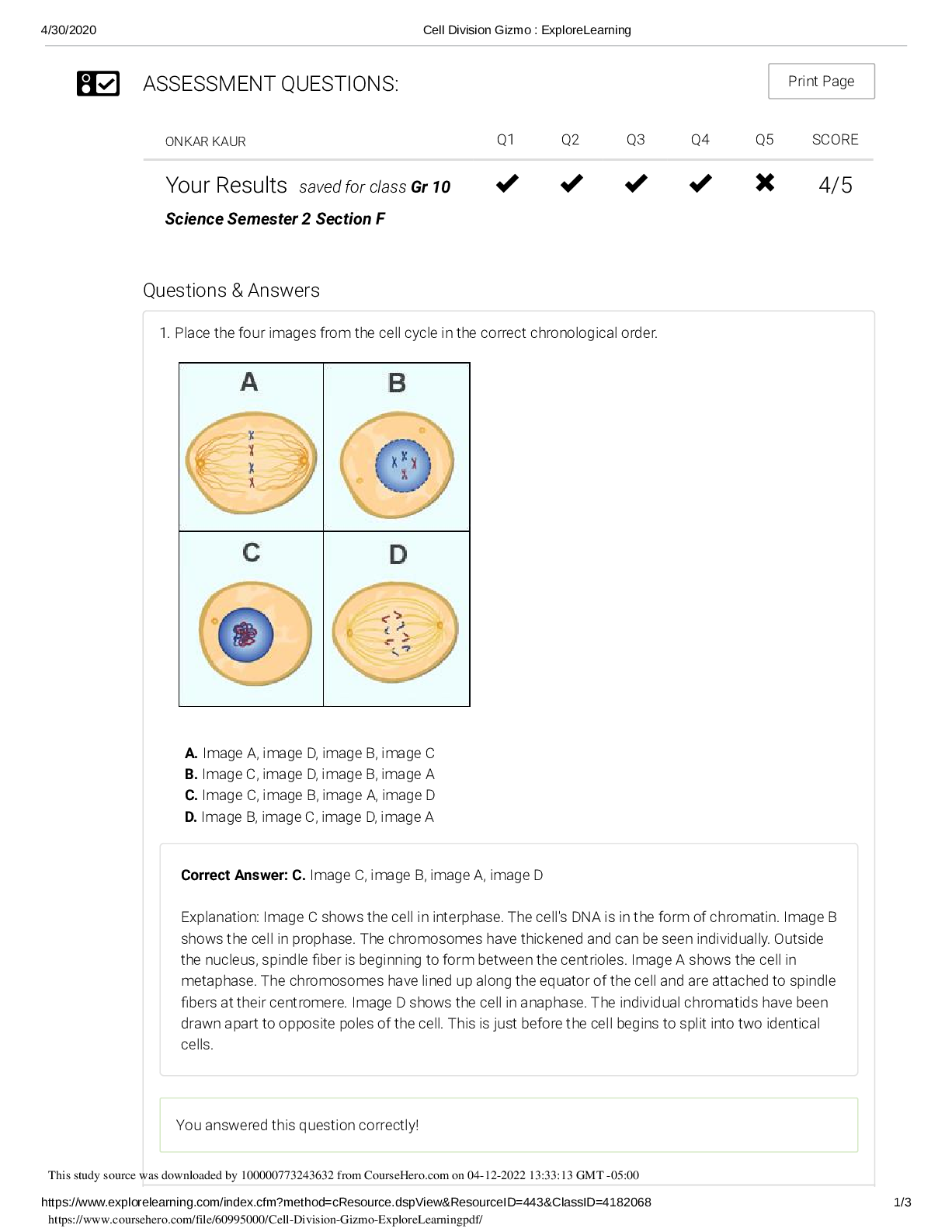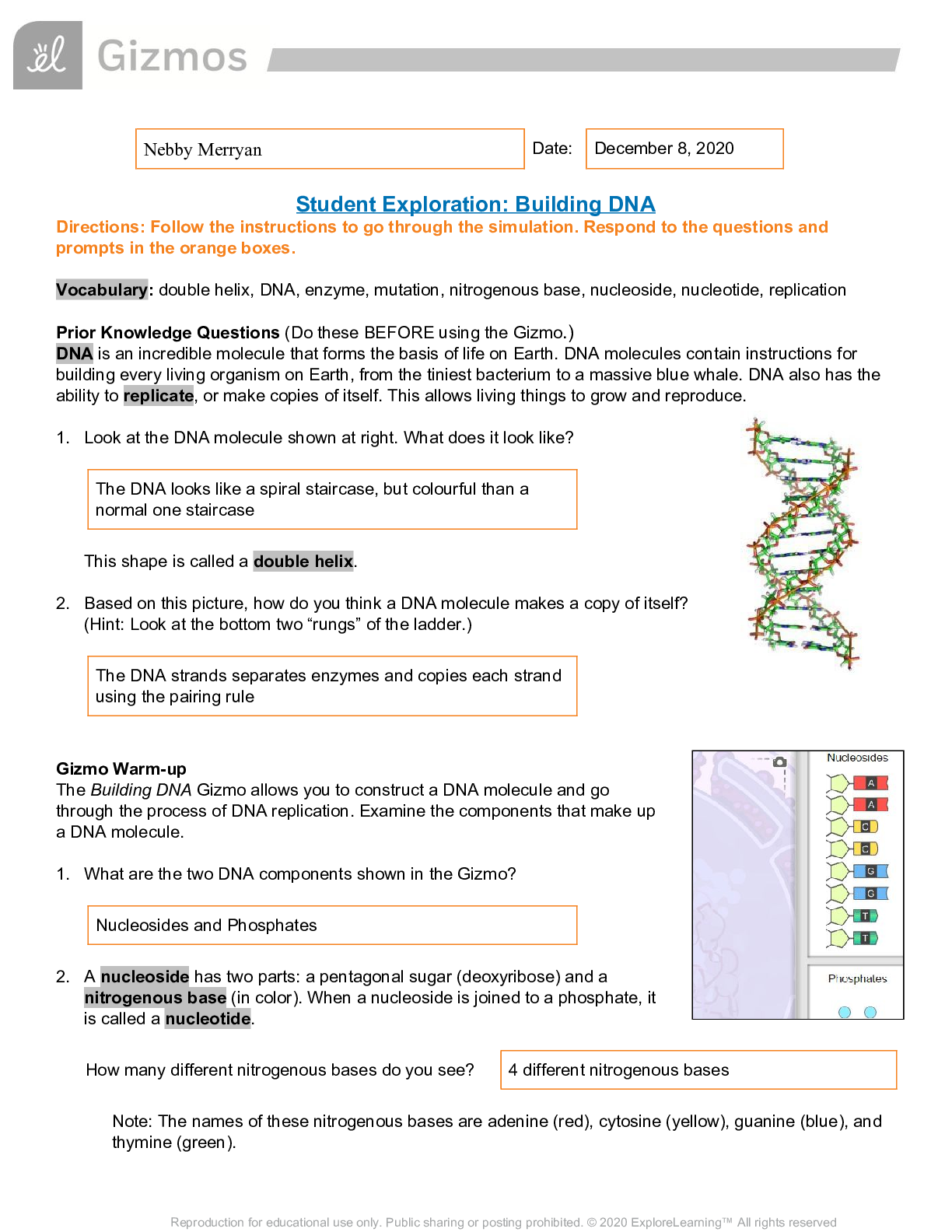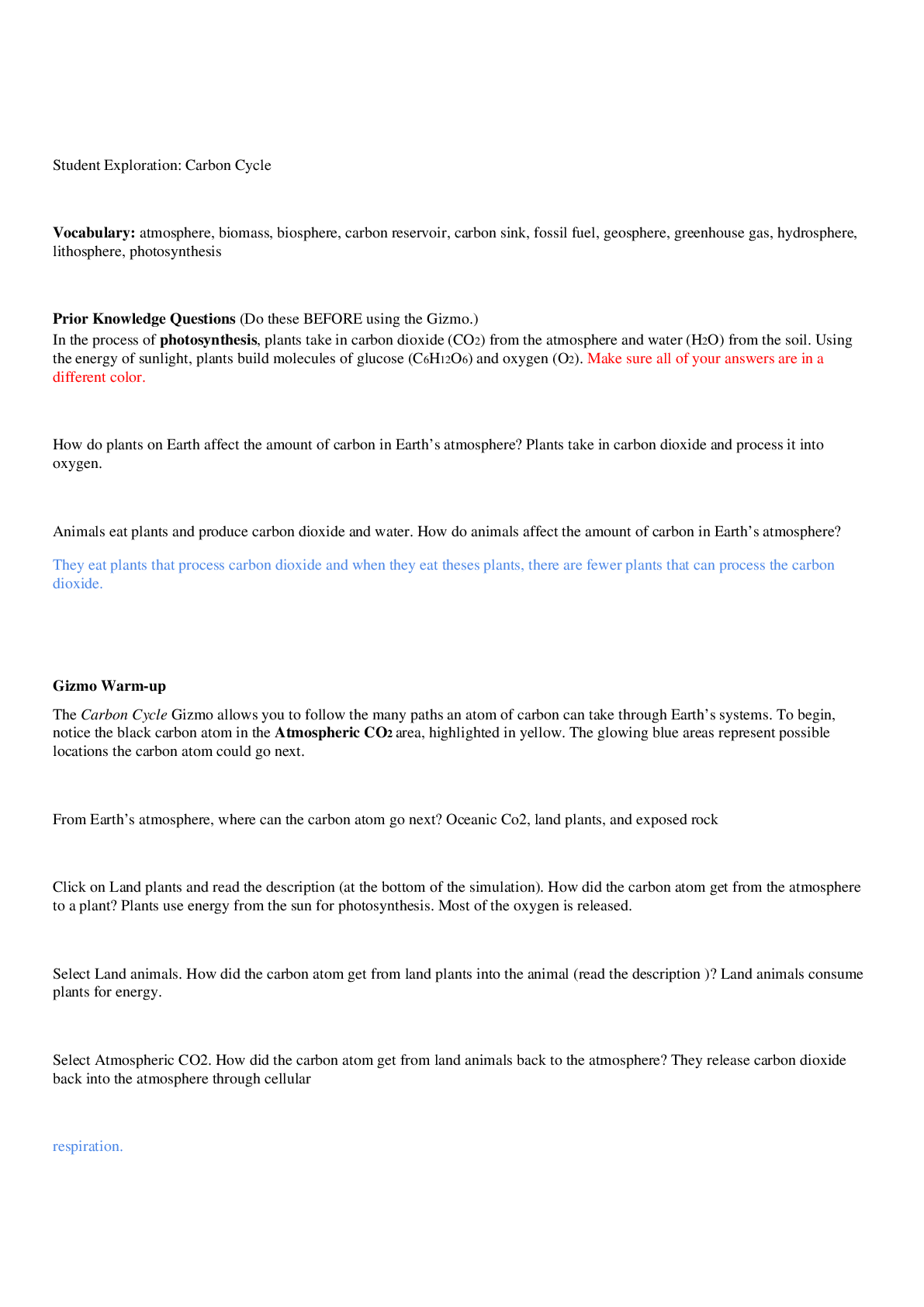GIZMO Cell Types SE.docx. BIOLOGY GIZMOS. GRADED A+
Document Content and Description Below
Vocabulary: ATP, bacteria, carbon dioxide (CO2), cell, cellular respiration, compound light microscope, eukaryote, multicellular, muscle cell, neuron, organelle, photosynthesis, prokaryote, protist,... red blood cell, root hair cell, tissue, unicellular, white blood cell Prior Knowledge Questions (Do these BEFORE using the Gizmo.) 1. How do you know if something is alive? Describe some of the characteristics of living things. Beings that are alive have the ability to reproduce, evolve and maintain a metabolism (be able to produce energy from gaining energy) 2. Humans, plants and mushrooms are all alive. What do these organisms have in common? They can all reproduce/multiply, evolve and have some sort of metabolism Gizmo Warm-up In the Cell Types Gizmo, you will use a light microscope to compare and contrast different samples. On the LANDSCAPE tab, click on the Elodea leaf. (Turn on Show all samples if you can’t find it.) Switch to the MICROSCOPE tab to observe the sample as it would appear under the microscope. By default, this microscope is using 40x magnification. 1. Drag the Coarse focus slider until the sample is focused as well as possible. Then, improve the focus with the Fine focus slider. What do you see? I see the representation of the eucaryote cells in the leaf, which are a little rectangular and green, because of the chlorophyll 2. Select the 400x magnification. If necessary, adjust the fine focus. Now, what do you see? Now, I can see the cells closer. You can even see the chloroplasts (the small green dots) and the nucleus The individual chambers you see are cells, the smallest functional unit of an organism. This study source was downloaded by 100000773243632 from CourseHero.com on 04-12-2022 11:17:09 GMT -05:00 https://www.coursehero.com/file/63024821/GIZMO-Cell-Types-SEdocx/ 2018 Activity A: Observing cells Get the Gizmo ready: On the LANDSCAPE tab, click on the woman’s right arm to choose the Human skin sample. Select the MICROSCOPE tab. Introduction: Complex organisms are made up of smaller units, called cells. Most cells are too small to be seen by the naked eye. Microscopes are used to magnify small objects, so here you will use a compound light microscope to observe the cells of different organisms. Question: What are similarities and differences between cells from different organisms? 1. Match: Read about each microscope part. Match the description to the part on the diagram. B Stage: Platform where a slide is placed. A Eye piece: Lens at the top of the microscope that the user looks though. This lens most commonly magnifies a sample by 10x. C Coarse focus knob: Large knob that moves the stage up and down to focus the sample. D Fine focus knob: Small knob that moves the stage over a short distance to refine the focus. E Objective lens: A second lens that further magnifies the sample. Microscopes usually have several objective lenses with different magnifications. The total magnification is the product of the eyepiece magnification and the objective lens magnification. F Slide: A rectangular piece o [Show More]
Last updated: 2 years ago
Preview 1 out of 7 pages

Buy this document to get the full access instantly
Instant Download Access after purchase
Buy NowInstant download
We Accept:

Reviews( 0 )
$8.00
Can't find what you want? Try our AI powered Search
Document information
Connected school, study & course
About the document
Uploaded On
Apr 12, 2022
Number of pages
7
Written in
Additional information
This document has been written for:
Uploaded
Apr 12, 2022
Downloads
0
Views
325














